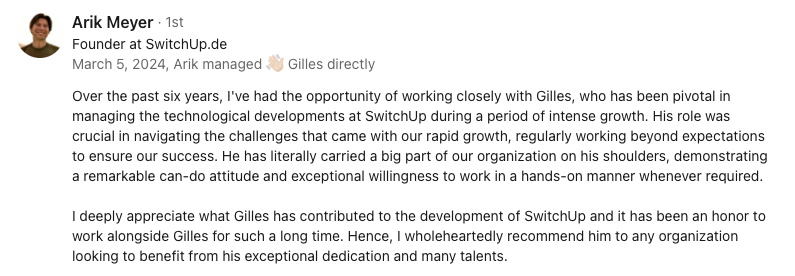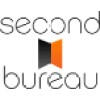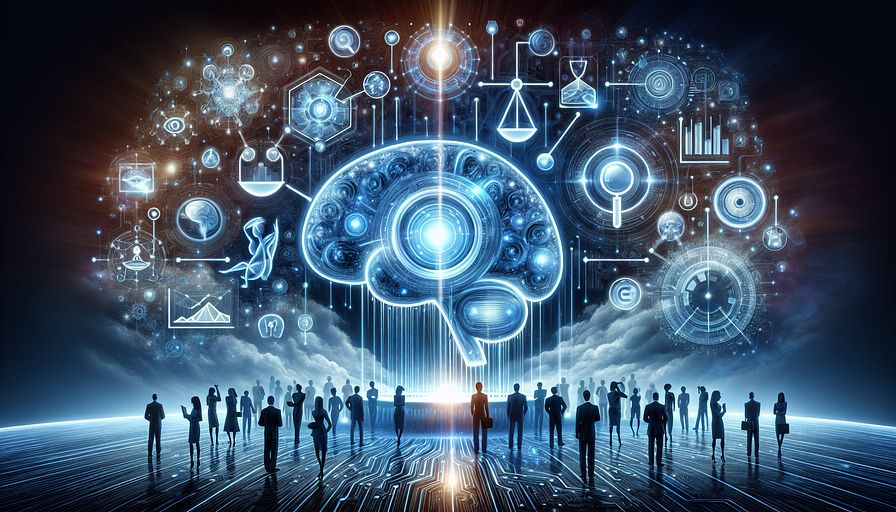Navigating Fog, Edge, and IoT in Distributed Computing
Abstract:
The landscape of distributed computing is evolving, with fog computing, edge computing, and IoT devices playing crucial roles. Fog computing reduces latency and enables quick decision-making, while edge computing allows for faster decision-making, reduced bandwidth costs, and increased security and privacy. IoT devices generate substantial data, and edge computing ensures that only relevant data is sent to the cloud for processing. These technologies intersect, requiring thoughtful management and integration. Technology leaders must foster innovation and collaboration to navigate the challenges and opportunities presented by distributed computing, positioning their organizations for success in a rapidly changing landscape.
Welcome to the Future: Navigating Through Clouds and Edges
Imagine standing at the forefront of a vast, uncharted territory, where the winds of technological advancements are constantly reshaping the terrain. As a Chief Technology Officer, my role often feels akin to that of an explorer, venturing into the unknown with a compass pointing towards innovation and collaboration. This vast expanse, filled with the mysteries of fog computing, the unexplored corners of edge computing, and the intricate networks of Internet of Things (IoT) devices, is our modern landscape of distributed computing.
The convergence of these technologies is not merely changing our computing strategies; it's revolutionizing the way organizations process data, make decisions, and ultimately, achieve their business outcomes. The peculiarities of this technological convergence raise an interesting question: Are we merely participants in this transformation, or are we the cartographers, mapping out new paths to innovation? Funny enough, the answer might just lie in the midst of understanding these relatively new computing paradigms. By demystifying them, we not only navigate through the fog (pun intended) but also empower our teams to harness their full potential, fostering a culture of informed experimentation and bold pioneering.
The dialogue surrounding fog, edge, and IoT is more than just technical jargon tossed around in board meetings. It's about laying down the roots for a future where data is not only abundant but also intelligently leveraged, ensuring we are not just reactive but also proactive in our strategies. So, let's put on our explorer hats (figuratively speaking) and embark on this journey together, unraveling how these technologies intertwine and shape the course of our digital expedition.
Understanding Fog Computing
In our quest to demystify the misty domains of distributed computing, let's turn our attention to a concept that's shaping the very fabric of how we approach data processing — fog computing. At its core, fog computing emerges as a savior in our battles against latency, providing a much-needed buffer between the cloud and our devices on the ground. As we grapple with the burgeoning demands for quicker decision-making and real-time analytics, the importance of processing data closer to where it's generated cannot be overstated. This is where fog computing dances into the spotlight, offering a nimble solution that's as close to real magic as IT gets.
Reducing Latency, Enhancing Decision-making
In the labyrinth of network architecture, fog computing acts like an efficient traffic controller, directing data where it needs to go with minimal delay. Imagine a scenario in a smart factory where sensors detect a potential equipment malfunction. Instead of sending this critical data on a round trip to the cloud, fog computing steps in to process the information locally. This not only slashes the response time but also ensures that corrective actions are initiated swiftly, averting potential disasters. Such agility in decision-making is akin to giving organizations a sixth sense, enabling them to feel their operational environment and respond with precognition.
The Role of Fog Computing in Distributed Systems
Fog computing doesn't operate in isolation. It's a pivotal player in the distributed computing ensemble, harmonizing the flow of data across networks. By decentralizing data processing, fog computing alleviates the load on cloud resources, leading to more efficient operations and significantly reducing the time to insight. In essence, fog computing acts as a bridge, connecting the dots between the cloud and edge computing, and ensuring that data travels the path of least resistance.
- Network architecture: Fog computing introduces a layer of intelligence at the network's edge, optimizing data flow and making it more resilient against disruptions.
- Data processing strategies: It enables a more nuanced approach to data analytics, allowing for preliminary processing at the edge, with only the most relevant data being escalated to the cloud.
To illustrate the strategic advantage of fog computing, let's consider the healthcare industry. Hospitals equipped with IoT devices can leverage fog computing to monitor patients' vitals in real-time. In emergency situations, this can mean the difference between life and death, as immediate data analysis at the fog level can trigger instant alerts to medical personnel. This scenario underscores fog computing's vital role in not just enhancing operational efficiency but also in safeguarding human life.
In conclusion, as we navigate through the mists of our digital journey, fog computing stands out as a beacon, guiding us towards smarter, faster, and more intuitive ways of processing data. Its role in empowering our strategies, operations, and decision-making processes is undeniable, making it an invaluable ally in our continued quest for innovation.
Exploring Edge Computing
As we venture deeper into the fabric of modern computing, the spotlight now shifts towards edge computing. Distinguished by its approach of processing data closer to the source of generation—namely, IoT devices—edge computing acts as a cornerstone in the distributed computing architecture. Think of it as a close relative of fog computing, but with its boots firmly on the ground. While both paradigms aim to reduce latency and bring data processing closer to the action, edge computing prides itself on being at the front lines, directly interfacing with IoT devices.
The Core Advantages of Edge Computing
Imagine a world where your IoT devices not only collect data but also make sense of it then and there. This is not a far-fetched fantasy but the reality enabled by edge computing. The advantages are manifold, ranging from reduced bandwidth costs—by avoiding the need to send vast amounts of raw data over the network—to improved security and privacy, as sensitive information can be processed locally rather than being transmitted to a central server. Additionally, edge computing enhances the efficiency of data handling, ensuring that only pertinent data makes its way onto the cloud, thus optimizing resources and reducing operational expenses.
- Reduced bandwidth costs: By locally processing a significant proportion of the data, the reliance on bandwidth-intensive data transmission is minimized.
- Increased security and privacy: Local data processing enables sensitive information to be handled in a more secure environment, close to its source.
- Enhanced efficiency: With the capability to filter and process data at the source, edge computing ensures that only relevant data is sent to the cloud, streamlining operations and conserving resources.
In my experience, the true might of edge computing is revealed when used in tandem with IoT devices. It's akin to having a personal assistant for each device, meticulously sorting through data in real-time, deciding what's worthy of further analysis, and what's merely digital chaff. This selective processing is not just about efficiency; it's about enabling smarter, more responsive systems that can adapt in real-time without overburdening the network or the cloud.
The Symbiotic Relationship with IoT
The magic happens at the confluence of edge computing and IoT. As IoT devices proliferate, generating an overwhelming tsunami of data, edge computing offers a beacon of hope. It ensures that this deluge is managed efficiently, allowing only the most critical data to embark on a journey to the cloud. This relationship is not merely beneficial; it's essential in ensuring that our networks remain agile and cost-effective, without compromising on security or the ability to make real-time decisions.
Thus, as we navigate through the realms of distributed computing, edge computing emerges as a formidable ally. It's not just about handling data; it's about redefining our approach to it, ensuring that our systems are not just smarter and faster, but also more attuned to the realities of operating in a world awash with data. With its roots deeply embedded in the world of IoT, edge computing propels us forward, ensuring that we're not merely keeping pace with technological advancements but are also set to define them.
The Intersection of Fog, Edge, and IoT
When fog computing, edge computing, and the Internet of Things (IoT) converge, it's a bit like hosting a grand banquet where each guest brings a unique dish to the table. The complexity of ensuring that every element complements the others without overshadowing them reflects the journey of managing and integrating these cutting-edge technologies. From the moment data springs to life in IoT devices, through its selective processing journey at the edge, and its ultimate refinement in the cloud, this trio dances a delicate ballet of data movement and analysis.
Harmonizing a Symphony of Data
In my experience as a Chief Technology Officer, ensuring seamless operation across fog computing, edge computing, and IoT is akin to conducting an orchestra. Each section must be in perfect harmony, requiring meticulous attention to the flow of data and the synchronization of processes. The main challenge lies in the seamless integration of these technologies, ensuring that data doesn't just move but glides from one point to another, optimized and secure at every stage.
One innovative solution is to employ sophisticated orchestration tools that manage data's journey from IoT devices to the cloud. These tools act like skilled conductors, directing each note of data to its rightful place, whether it be for immediate action at the edge or further analysis in the cloud. Such solutions embrace the nuances of each technology, allowing them to work in concert, enhancing efficiency and decision-making capabilities.
Cutting Through the Complexity with Real-World Success
Let me share an example to illustrate this harmony in action. A global logistics company faced the daunting task of tracking shipments across vast distances with pinpoint accuracy. By harnessing the power of IoT for real-time location data, employing edge computing for immediate processing and decision-making on the vehicle, and utilizing fog and cloud computing for overarching analytics and optimization, they created a symphony of technological innovation. This approach not only improved operational efficiency but also revolutionized their customer service experience, delivering near-real-time tracking updates and predictive delivery estimates. This story is a testament to the transformative potential when these technologies sing in harmony.
- Orchestration tools: These enable the streamlined management of data across the computing spectrum, simplifying complex workflows.
- Security protocols: Essential in maintaining the integrity and privacy of data as it travels from IoT devices through the fog and edge, and ultimately to the cloud.
- Adaptive algorithms: They dynamically adjust data processing strategies based on current network conditions and processing requirements, ensuring optimal efficiency.
The confluence of fog computing, edge computing, and IoT is not without its challenges, from managing the sheer volume of data to ensuring its security along its journey. Yet, it's this very complexity that breeds innovation. Through collaborative strategies and a playful embrace of new technologies, we're poised to turn potential obstacles into opportunities. As we continue to navigate this intertwined landscape, the promise of a smarter, more connected world serves as our North Star, guiding us towards untold possibilities.
Navigating Challenges and Seizing Opportunities
As we peruse the pathways of distributed computing, the fusion of fog computing, edge computing, and the Internet of Things (IoT) unfolds a narrative of innovation brimming with both hurdles and prospects. Venturing through this narrative as a Chief Technology Officer, I've witnessed first-hand the transformative potential these technologies hold. Yet, like any voyage of discovery, the path is dotted with challenges that demand our vigilant navigation.
Charting the Course Through Challenges
Indeed, the amalgamation of these technological forces presents a complex puzzle. The sheer volume of data generated by IoT devices, combined with the necessity for real-time processing and analysis, places unprecedented demands on our network architectures and data strategies. Moreover, ensuring the security and privacy of this data as it traverses through fog and edge layers adds layers of complexity to our mission. However, let us not be daunted; for within these challenges lie vast oceans of opportunity. Embracing innovative solutions and fostering a culture of collaborative experimentation can turn these potential obstacles into platforms for groundbreaking advancements.
Seizing the Future of Distributed Computing
The silver lining amidst these technological tempests is the boundless opportunity for creativity and progress. As technology leaders, we stand at the helm, guiding our organizations through uncharted waters with a clear vision and a steadfast commitment to innovation. Proactive adaptation and strategic positioning in the face of emerging trends will not only safeguard our journey today but also anchor our success tomorrow. We're on the cusp of leveraging AI and machine learning to enhance decision-making processes, exploring the realms of quantum computing, and redefining network architectures to accommodate the exponential growth of data. These advancements beckon us to rethink our approaches, inviting us to explore symbiotic relationships between humans and machines, and between data and decision-making.
To my fellow technology architects, let us view these challenges not as deterrents but as catalysts that propel us towards smarter, more interconnected ecosystems. The voyage through the fog, along the edges, and across the IoT seascape is fraught with both peril and promise. Yet, it is within our grasp to transform these challenges into a testament to human ingenuity and collaborative spirit. "Innovation is born from the marriage of challenge and creativity," a maxim that encapsulates our journey ahead. As we navigate these burgeoning frontiers, may we remain intrepid explorers, always eager to chart new courses and discover realms beyond the horizon, where the only limit is the breadth of our imagination. Indeed, the question that echoes through the corridors of our collective endeavor is not whether we will encounter challenges, but how we will transform them into milestones of our innovative legacy.
You might be interested by these articles:
- Fog Computing Applications
- The Rise of Fog Computing
- Fog computing: boosting fintech innovation and compliance in Europe





